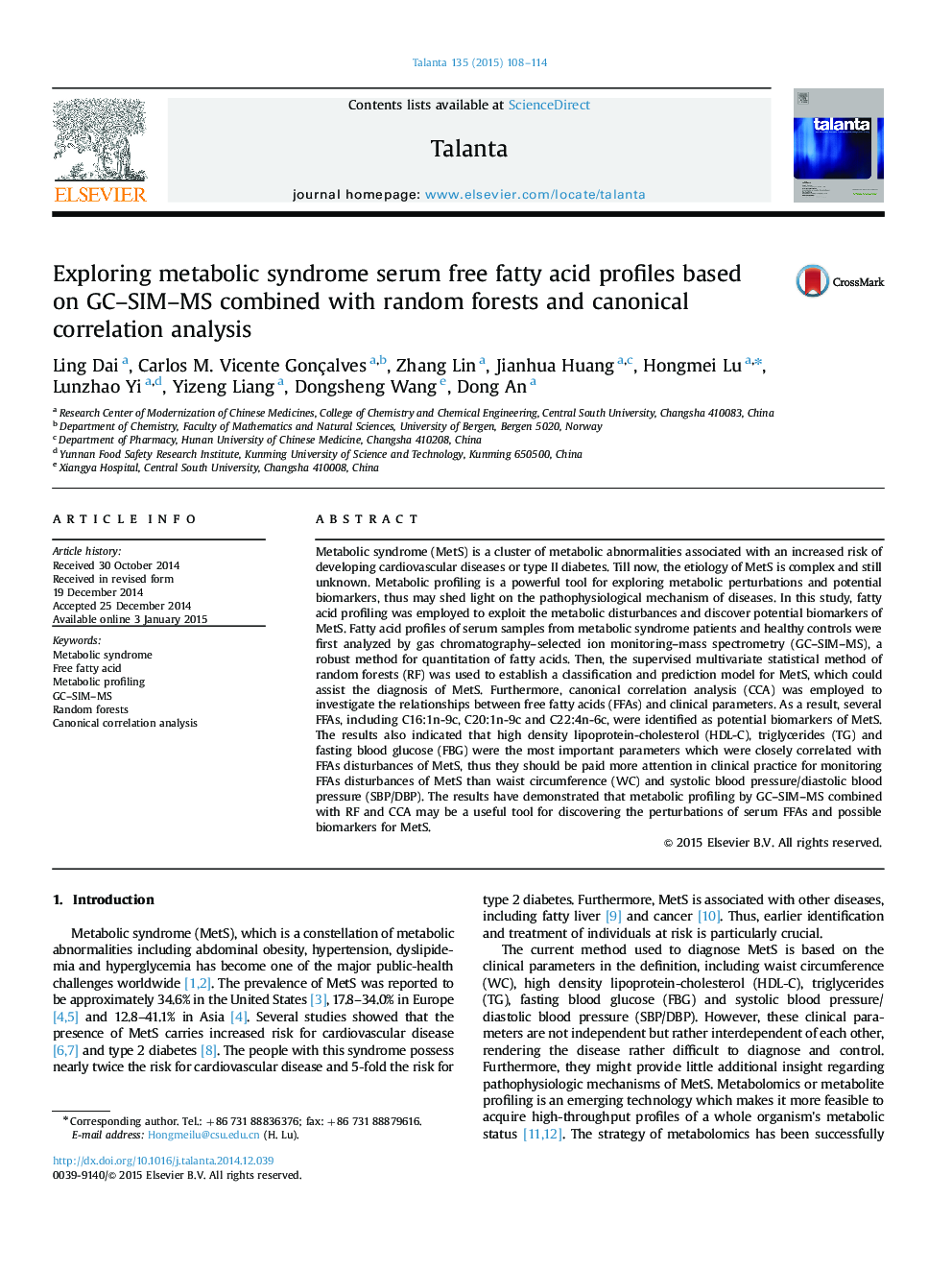| Article ID | Journal | Published Year | Pages | File Type |
|---|---|---|---|---|
| 1241966 | Talanta | 2015 | 7 Pages |
•Selected ion monitoring mode was applied to the accurate quantitation of fatty acids.•Random forests were used to establish a classification and prediction model for MetS.•CCA was utilized to screen potential biomarkers associated with clinical parameters.
Metabolic syndrome (MetS) is a cluster of metabolic abnormalities associated with an increased risk of developing cardiovascular diseases or type II diabetes. Till now, the etiology of MetS is complex and still unknown. Metabolic profiling is a powerful tool for exploring metabolic perturbations and potential biomarkers, thus may shed light on the pathophysiological mechanism of diseases. In this study, fatty acid profiling was employed to exploit the metabolic disturbances and discover potential biomarkers of MetS. Fatty acid profiles of serum samples from metabolic syndrome patients and healthy controls were first analyzed by gas chromatography–selected ion monitoring–mass spectrometry (GC–SIM–MS), a robust method for quantitation of fatty acids. Then, the supervised multivariate statistical method of random forests (RF) was used to establish a classification and prediction model for MetS, which could assist the diagnosis of MetS. Furthermore, canonical correlation analysis (CCA) was employed to investigate the relationships between free fatty acids (FFAs) and clinical parameters. As a result, several FFAs, including C16:1n-9c, C20:1n-9c and C22:4n-6c, were identified as potential biomarkers of MetS. The results also indicated that high density lipoprotein-cholesterol (HDL-C), triglycerides (TG) and fasting blood glucose (FBG) were the most important parameters which were closely correlated with FFAs disturbances of MetS, thus they should be paid more attention in clinical practice for monitoring FFAs disturbances of MetS than waist circumference (WC) and systolic blood pressure/diastolic blood pressure (SBP/DBP). The results have demonstrated that metabolic profiling by GC–SIM–MS combined with RF and CCA may be a useful tool for discovering the perturbations of serum FFAs and possible biomarkers for MetS.
Graphical abstractFigure optionsDownload full-size imageDownload as PowerPoint slide
